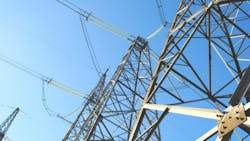Duke Energy Indiana Proposes Revised Plan to Modernize Grid
Duke Energy Indiana filed a revised plan Monday with Indiana state utility regulators to modernize its aging electric grid that delivers power to more than 800,000 Hoosier homes, businesses and industries.
The seven-year, $1.83 billion plan uses a combination of advanced technology and infrastructure upgrades to improve service to customers and provide them with better information about their energy use.
In May, the Indiana Utility Regulatory Commission denied Duke Energy Indiana's original plan proposed in August 2014, asking for more details and a more specific focus on electric grid projects.
"This plan will improve the reliability of our electric service and give customers more control over their energy usage and bills while creating and supporting thousands of Hoosier jobs," said Duke Energy Indiana President Melody Birmingham-Byrd. "We've responded to the commission's guidance and issues raised in its May order. The revised plan is more detailed and focuses on projects that improve the reliability of our service while modernizing our aging infrastructure."
Some of the plan's benefits include:
Improved power reliability and safety from updating and replacing aging electric grid infrastructure, including substations, utility poles, power lines and transformers.
Fewer and shorter power outages where "self-healing" systems are installed. Today, when a tree or other object comes in contact with a power line causing an outage, every customer served by that line — and other lines connected to it — loses power. With self-healing technology, the company can automatically detect the problem, isolate it and reroute power — so fewer customers are affected while repairs are made.
Fewer estimated customer bills because of new, advanced meters that are read automatically. With the capability to read meters remotely, there's minimal need to estimate customer bills during times when meters can't be easily accessed. The company will no longer have to access a homeowner's property for monthly, walk-by meter reads.
Quicker service because some customer requests can be performed remotely through the new meters. For instance, there will be no need for customers to wait for technicians to arrive to activate or deactivate service after a customer move.
Faster outage identification because the company will be able to send a signal to meters in a targeted area to identify customers out of service rather than only relying on customers to call. The company will also be able to provide customers more information about power outages affecting them and estimated restoration times.
More customer choices and control over energy use because of advanced digital meters. The meters provide customers with access to data such as an hour-by-hour comparison of energy use and average energy use by day of week. The information can help customers make wiser energy decisions. Approximately 40 percent of the nation already has made the transition to advanced digital meter technology.
Energy savings from grid technology that optimizes voltage and reduces overall power consumption by about 1 percent on upgraded power lines.
Voluntary rate options such as "time-of-use" rates for residential and small business customers to provide them with more choices and control over their energy costs.
If the plan is approved by the Indiana Utility Regulatory Commission, customers will see a gradual rate increase averaging about 1 percent per year between 2017 and 2022.
Duke Energy estimates the modernization work will generate or support more than 5,000 Indiana jobs over the seven-year period. There's also an estimated state and local community tax benefit of approximately $180 million over the seven-year plan.
The Indiana Utility Regulatory Commission will set a schedule for hearings on the proposed plan. A decision is anticipated by mid-2016.
The company is filing the plan under the provisions of Indiana Senate Enrolled Act 560, state legislation which was passed in 2013 and is aimed at improving utility infrastructure. Under the law, utilities can file a seven-year infrastructure improvement plan with state utility regulators. If approved, a utility can request recovery of 80 percent of its investment through a customer bill tracker. Recovery of the remaining 20 percent would be deferred for review until the utility's next base rate case. Under the new law, utilities must file a base rate case before the end of their seven-year plans.
Duke Energy Indiana's operations provide about 7,500 megawatts of owned electric capacity to approximately 810,000 customers in a 23,000-square-mile service area, making it the state's largest electric supplier.
